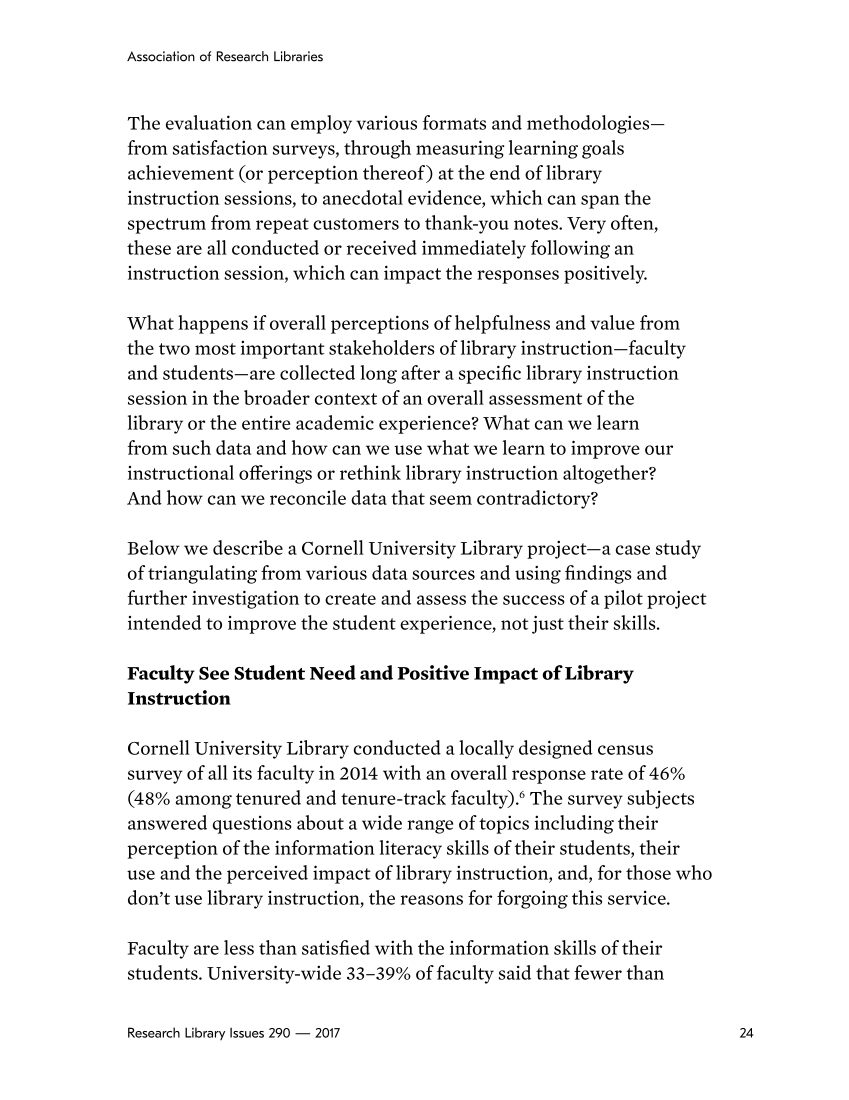24 Association of Research Libraries Research Library Issues 290 — 2017 The evaluation can employ various formats and methodologies— from satisfaction surveys, through measuring learning goals achievement (or perception thereof ) at the end of library instruction sessions, to anecdotal evidence, which can span the spectrum from repeat customers to thank-you notes. Very often, these are all conducted or received immediately following an instruction session, which can impact the responses positively. What happens if overall perceptions of helpfulness and value from the two most important stakeholders of library instruction—faculty and students—are collected long after a specific library instruction session in the broader context of an overall assessment of the library or the entire academic experience? What can we learn from such data and how can we use what we learn to improve our instructional offerings or rethink library instruction altogether? And how can we reconcile data that seem contradictory? Below we describe a Cornell University Library project—a case study of triangulating from various data sources and using findings and further investigation to create and assess the success of a pilot project intended to improve the student experience, not just their skills. Faculty See Student Need and Positive Impact of Library Instruction Cornell University Library conducted a locally designed census survey of all its faculty in 2014 with an overall response rate of 46% (48% among tenured and tenure-track faculty).6 The survey subjects answered questions about a wide range of topics including their perception of the information literacy skills of their students, their use and the perceived impact of library instruction, and, for those who don’t use library instruction, the reasons for forgoing this service. Faculty are less than satisfied with the information skills of their students. University-wide 33–39% of faculty said that fewer than









































